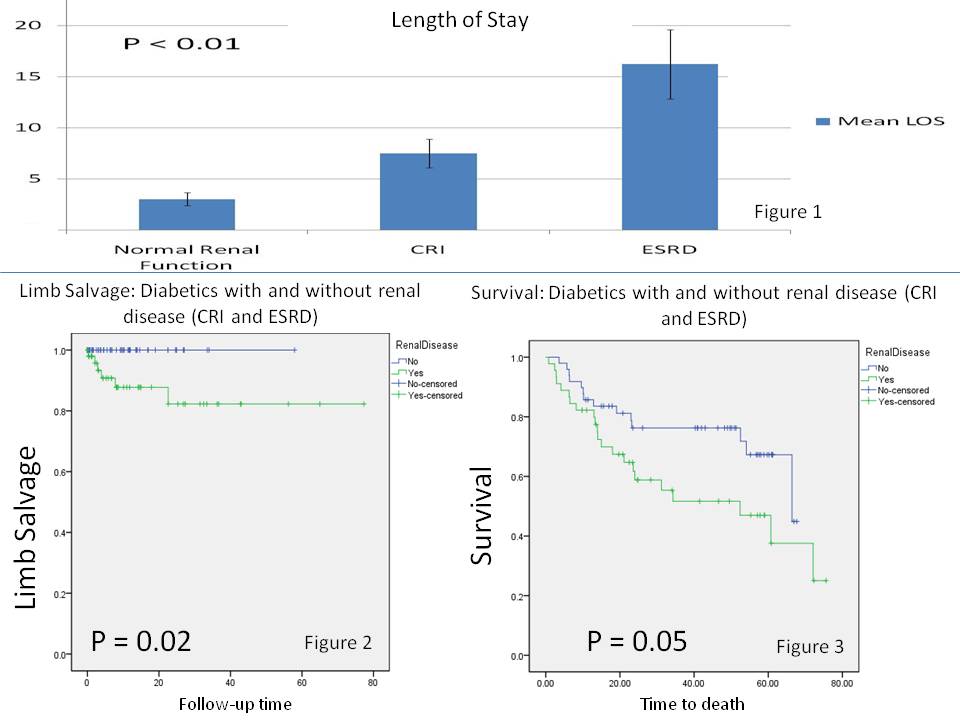|
|
 |
Back to Annual Symposium Program
The Deleterious Effects of Renal Disease on Diabetic Patients Undergoing Infrainguinal Interventions
Rami O. Tadros, MD, Ageliki G. Vouyouka, MD, Andrew Tye, BS, Leon D. Boudourakis, MD, Constantinos T. Spyris, BA, Victoria J. Teodorescu, MD, Sharif H. Ellozy, MD, Michael L. Marin, MD, Peter L. Faries, MD.
The Mount Sinai School of Medicine, New York, NY, USA.
OBJECTIVES:
This study assesses the effects of chronic renal insufficiency (CRI) and end stage renal disease (ESRD) on diabetics undergoing percutaneous infrainguinal interventions.
METHODS:
Diabetics requiring infrainguinal interventions were studied retrospectively. Outcomes were compared between those with normal renal function, CRI and ESRD. Statistical analysis included chi-square, Student’s t-test, ANOVA and Kaplan-Meier.
RESULTS:
Ninety-five diabetics were analyzed (28 with CRI and 18 with ESRD). Mean follow-up of 8 months (range, 0-40). There were no differences in the index procedures performed or peri-procedural complication rates between groups. Compared to patients with normal renal function, diabetics with CRI or ESRD were more likely to be hypertensive (98% vs. 82%, p<0.01), have isolated tibial disease (18% vs. 7%, p=0.05) and present with tissue loss (67% vs. 43%, p<0.01). Patients with CRI or ESRD had more returns to the operating room (15% vs. 2%, p<0.01). However, overall patency rates did not differ. Renal disease was associated with a step-wise increased length of stay (LOS, p<0.01, fig. 1), inferior limb salvage (p=0.02, fig. 2) and worse survival (p=0.05, fig. 3). Diabetics with ESRD compared to those with normal renal function or CRI presented at an earlier age (63.9 vs. 72.1 years, p<0.01).
CONCLUSIONS:
Diabetics with CRI or ESRD compared to those with normal renal function are associated with more returns to the OR, an increased LOS, worse limb salvage and decreased survival despite comparable overall patency rates. Further research will be necessary to assess the impact of such deleterious outcomes on our current healthcare economy. 
Back to Annual Symposium Program

|


